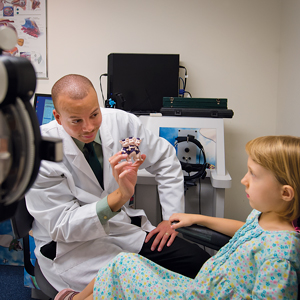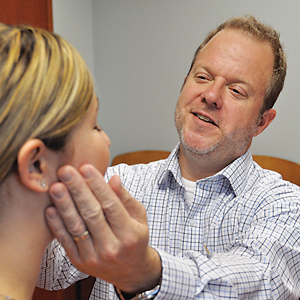When many of us think of cosmetic surgery, we might picture a flashy celeb having “work” done, like a facelift or liposuction. Cosmetic surgery, however, isn’t limited to these types of procedures, but is defined as any surgery that improves the appearance of a physical feature, irregularity, or defect. When it comes to children, cosmetic surgery takes on added importance, specifically regarding irregularities including crossed eyes, protruding ears, or large and misshapen noses.
ABC’s Good Morning America recently reported a 30 percent increase in cosmetic surgery for children under 18 over the last decade. While that number may seem surprising, it represents a greater awareness of treatment options for children with abnormal or irregular features, particularly as that feature relates to medical concerns and as it may cause the child physical or emotional stress.
Take bullying as an example. Many news outlets have reported one reason for the increase in cosmetic procedures for kids under 18 is a correlating rise in bullying and accordingly, a society that is more sensitive to the effects of bullying on its young people. Plastic surgeons confirm that many parents seek surgery for their children to help put an end to the ridicule their kids might be subject to because of physical abnormalities.
However, other procedures such as rhinoplasty and strabismus surgery are often recommended for medical as well as cosmetic reasons. It should be noted that because of their therapeutic value, these two are also likely to be covered by insurance plans.
 Strabismus, the condition where a person cannot properly sustain an equal and symmetrical alignment of both eyes simultaneously under normal conditions, is an irregularity that may require surgery to correct. Strabismus affects approximately 4 percent of the nation’s population. Often, one or both eyes abnormally and uncontrollably will turn in, out, up, or down. “The most common underlying problem for this condition in children is that the child has a poor neuromuscular control of the movement and positioning of the eyes,” according to Natario Couser, MD, a pediatric ophthalmologist and specialist in strabismus with Virginia Pediatric Ophthalmology Specialists. While strabismus may be constant or intermittent, doctors agree children cannot outgrow strabismus. In fact, if left untreated it can lead to further complications including amblyopia, or lazy eye. Amblyopia, in turn, can lead to permanently decreased vision if not identified and treated in a timely manner. Although the recommended course of treatment will depend on the child’s unique situation, it may include the use of prisms in eyeglasses, muscle exercises, or botox injections into the eye muscles. In some cases, the recommended treatment may include eye muscle surgery under general anesthesia.
Strabismus, the condition where a person cannot properly sustain an equal and symmetrical alignment of both eyes simultaneously under normal conditions, is an irregularity that may require surgery to correct. Strabismus affects approximately 4 percent of the nation’s population. Often, one or both eyes abnormally and uncontrollably will turn in, out, up, or down. “The most common underlying problem for this condition in children is that the child has a poor neuromuscular control of the movement and positioning of the eyes,” according to Natario Couser, MD, a pediatric ophthalmologist and specialist in strabismus with Virginia Pediatric Ophthalmology Specialists. While strabismus may be constant or intermittent, doctors agree children cannot outgrow strabismus. In fact, if left untreated it can lead to further complications including amblyopia, or lazy eye. Amblyopia, in turn, can lead to permanently decreased vision if not identified and treated in a timely manner. Although the recommended course of treatment will depend on the child’s unique situation, it may include the use of prisms in eyeglasses, muscle exercises, or botox injections into the eye muscles. In some cases, the recommended treatment may include eye muscle surgery under general anesthesia.
Although strabismus surgery aims to restore the eyes to an improved alignment, it also has significant medical benefits for the patient including the elimination of double vision, curing or decreasing the frequency of headaches, and improving depth perception. After successful treatment, non-medical benefits commonly include higher self-esteem and overall better quality of life.
Rhinoplasty, or a nose job, is one of the most common forms of cosmetic surgery no matter the age of the patient. Nose reshaping is often performed to straighten the bridge, remove an unsightly bump, reshape the tip, correct a broken nose, or to improve breathing difficulties caused by a deviated septum. According to the American Society of Plastic Surgeons, approximately 35,000 rhinoplasty procedures were performed on patients age 13 to 19 in 2010. However, this surgery is not recommended for younger children. Typically the nose does not reach its adult size until age 15 or 16 for girls and even older for boys.
Travis Shaw, MD, is a specialist in reconstructive surgery of the head and neck at MEDARVA at Stony Point Surgery Center. “I discourage most nasal shaping surgery until the late teens when the nose is fully developed,” says Dr. Shaw. “The exception to this is rhinoplasty to correct deformity associated with cleft lip, which is done at an early age.”
Doctors often discuss the permanence of this procedure with children and their parents as well as urge them to consider how the reshaped nose will look as the patient ages. However, according to Dr. Shaw, when considering surgery for children, it is important to understand that every patient is different. Says Dr. Shaw, “Both the parents and the child should define the reasons for the surgery, understand the procedure and recovery, and have clear discussions of their expectations.”
Although the increased level in cosmetic surgery for children may be partly attributable to higher levels of bullying, it is also due to better awareness and higher acceptance of these types of procedures. In 2010, the American Society for Aesthetic Plastic Surgery (ASAPS) reported that nearly 9.5 million cosmetic surgical and nonsurgical procedures were performed in the U.S. That’s an increase of 155 percent since 1997. This overall increase among all adults and children indicates there is clearly less of a taboo regarding cosmetic surgery across the board.
According to ASAPS, 42 percent of the children under 18 nationwide who underwent cosmetic surgery in 2011 had cosmetic otoplasty, commonly referred to as ear pinning. Approximately 20 to 30 percent of children are born with external ear deformities, which may include over-development or under-development of ear cartilage as well as protruding or prominent ears. Because a child’s hearing is unaffected, the procedure to correct this irregularity is primarily cosmetic. While some defects are self-correcting, many are not and either otoplasty, the surgical reshaping of the outer ear, or a non-surgical procedure might be recommended. Unlike some other cosmetic procedures, otoplasty can be performed at a young age. Often, a child’s ears have grown and matured enough for surgery, reaching 90 percent of their adult size, by age six.
 Dr. Shaw performs otoplasty at MEDARVA at Stony Point Surgery Center. About the procedure, he says, “This can truly be a life-changing operation for children. My philosophy is to perform otoplasty by age five or six when the ears are developed and prior to the start of teasing that often comes from peers.”
Dr. Shaw performs otoplasty at MEDARVA at Stony Point Surgery Center. About the procedure, he says, “This can truly be a life-changing operation for children. My philosophy is to perform otoplasty by age five or six when the ears are developed and prior to the start of teasing that often comes from peers.”
Although the procedure requires anesthesia, the surgery is outpatient and the recovery time is relatively brief. Most children return to their normal routine in about a week.
Cosmetic surgery is one option for children born with physical abnormalities like these who suffer the effects of bullying. In each of the procedures mentioned here, the goal is to improve the quality of life for the patient. Many psychologists believe that cosmetic surgery can be instrumental in helping to improve the child’s self-esteem so they can regain confidence. Allison Twente, PhD, a licensed clinical psychologist who counsels children, adolescents, and families, concurs. “Because a child’s face and looks are directly associated with making eye contact or smiling, any abnormalities that interfere with smiling or making eye contact should be addressed, particularly if it can be fixed with a procedure such as strabismus, the correction of crossed eyes.”
However, Dr. Twente emphasized the importance of a full evaluation of the child and their needs when considering surgery. She says, “If the child is happy, I may not suggest doing the procedure for cosmetic reasons alone.” Like Dr. Shaw, Dr. Twente also believes the decision to undergo plastic surgery should be based on in-depth consultations with the child and parents and only with a full understanding of the anticipated results. “I would have a long discussion with the parents considering all the benefits and drawbacks to any facial procedure prior to making a decision to proceed. These discussions are an extremely important part of any cosmetic procedure – especially when a child’s emotional and physical wellbeing is at stake.”



